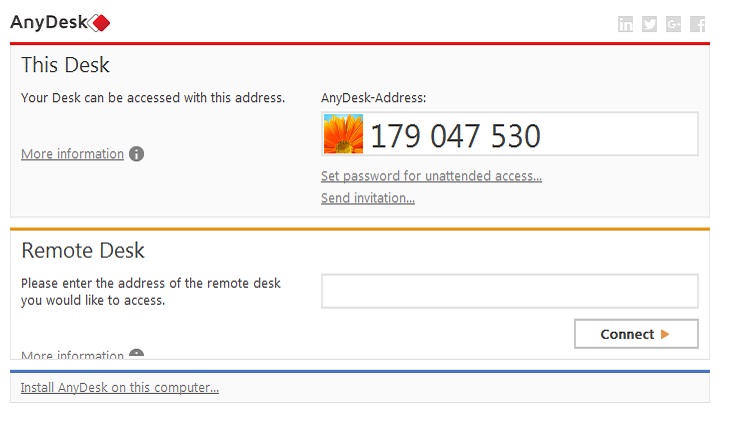It’s no secret that AnyDesk is one of the most widely used remote access software in the world. Did you know that it’s also one of the most secure? AnyDesk’s security features allow anyone to access someone else’s device in a totally protected manner. AnyDesk enables remote desktop operations with unparalleled performance. Such as Video/Image editing, administration and teamwork. AnyDesk provides banking-level security using TLS 1.2 encryption.
AnyDesk is a remote session solution available for many platforms. Access a device using ID or Alias.
See also: AnyDesk_ID_and_Alias, Unattended Access, Windows Server and Address Book
How to access a Remote Desktop
- The Remote User provides his ID or Alias .
- Enter the ID/Alias in the Address-label on the local device to request a session.
- The Accept Window then shows up on the remote device. By accepting the request, the session is established.
Active Session
Upon exceed of the session limit (based on your license), AnyDesk displays the list of your active sessions.
Connection Table

Displays operating systems compatible. Connecting from left row to first column:
| Windows | macOS | Linux | Android | iOS | ChromeOS | |
|---|---|---|---|---|---|---|
| Windows | ✓ | ✓ | ✓ | ✓ | ✓ | ✓ |
| macOS | ✓ | ✓ | ✓ | ✓ | ✓ | ✓ |
| Linux | ✓ | ✓ | ✓ | ✓ | ✓ | ✓ |
| Android | ✓ | ✓ | ✓ | ✓ | ✓ | ✓ |
| iOS¹ | ✓ | ✓ | ✓ | ✓ | ✓ | ✓ |
| ChromeOS² | ✓ | ✓ | ✓ | ✓ | ✓ | ✓ |


Remote Access Anydesk
¹ Remote Control to iOS/iPadOS devices is not supported.
² Remote Control to ChromeOS devices is not yet supported.
